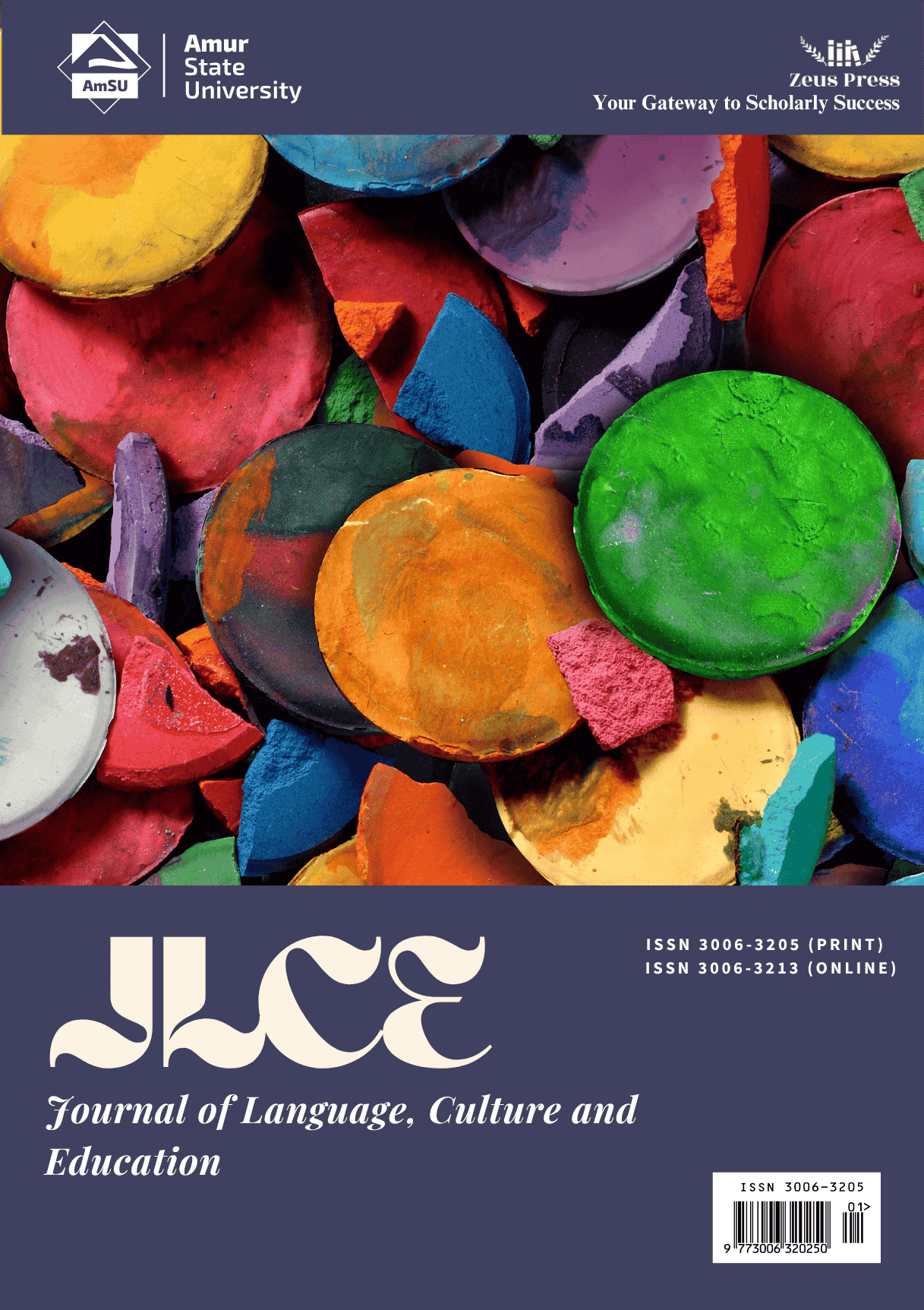Error Visualization Art: A Study on Mitigating English Learning Frustration through Grammatical Mistake Transformation Strategies—A Case Study of a Middle School in Taiyuan
Main Article Content
Keywords
error visualization, english learning frustration, grammatical-mistake transformation strategies
Abstract
In middle school English teaching, students often feel frustrated when confronted with grammatical mistakes, which affects their learning motivation and effects. On the basis of the demand for improving students' English learning experience and teaching quality, this study introduces an innovative way to transform grammatical mistakes into visual artwork. The study takes 320 middle school students from a middle school in Taiyuan as the research objects and adopts a questionnaire survey and work analysis as the research methods. This study aims to explore (1) the effects of a grammatical mistake transformation strategy on reducing students' grammar-related frustration and (2) the influence of flow experience in the creative process on the reconstruction of students' error cognition. The results show that error visualization can effectively reduce students' grammar-related frustration by helping them shift their mindset from “avoiding failure” to “appreciating growth trajectory” and provide new teaching strategies and ideas for middle school English teaching.
References
- Brown, H. D. (2017). Principles of language learning and teaching (6th ed.). Pearson.
- Bandura, A. (1997). Self-efficacy: The exercise of control. W.H. Freeman.
- Corder, S. P. (1967). The significance of learner's errors. IRAL: International Review of Applied Linguistics in Language Teaching, 5(4), 161–170. https://doi.org/10.1515/iral.1967.5.1-4.161
- Csikszentmihalyi, M. (1990). Flow: The psychology of optimal experience. Harper & Row.
- Dörnyei, Z. (2005). The psychology of the language learner: Individual differences in second language acquisition. Lawrence Erlbaum.
- Dweck, C. S. (2006). Mindset: The new psychology of success. Random House.
- Egbert, J. (2003). A study of flow theory in the foreign language classroom. Canadian Modern Language Review, 60(5), 549-586.
- Eisner, E. W. (2002). The arts and the creation of mind. Yale University Press.
- Ellis, R. (2008). The study of second language acquisition (2nd ed.). Oxford University Press.
- Gong, J. A. (1994). Helping students eliminate self-defeating behaviors. Jiangxi Education, (9), 13-14.
- Krashen, S. D. (1982). Principles and practice in second language acquisition. Pergamon.
- Larsen-Freeman, D. (2015) Research into Practice: Grammar Learning and Teaching. Language Teaching, 48, 263-280.
- https://doi.org/10.1017/s0261444814000408
- Ludke, K. (2022). Singing grammar: Effects of musical mnemonics on L2 tense acquisition. Language Learning, 72(1), 94-126.
- Nunan, D. (2003). Practical English language teaching. McGraw-Hill.
- Wang, Y. (2010). The enlightenment of “error analysis” on English grammar teaching. Teaching and Management, (3), 88-89.
- Zeng, Z. H., Hu, Y. Q., Peng, L. Y., Liu, X. R., He, Z., Zhao, L. L., & Yao, X. X. (2024). The impact of frustration on adolescents' mental health: The role of perceived stress and interpersonal relationships. Psychological Development and Education, (6), 865-876.
- Zheng, H. Y. (2019). Research on the teaching strategy of thinking visualization in middle school English from the perspective of core literacy. Foreign Language Teaching in Schools (Secondary School Edition), (9), 7-12.
- Zhong, X. L. (2012). A study on grammatical error analysis in middle school students' English writing and grammar teaching strategies [Unpublished master's thesis, Hunan Normal University]. Hunan Normal University. Changsha.


